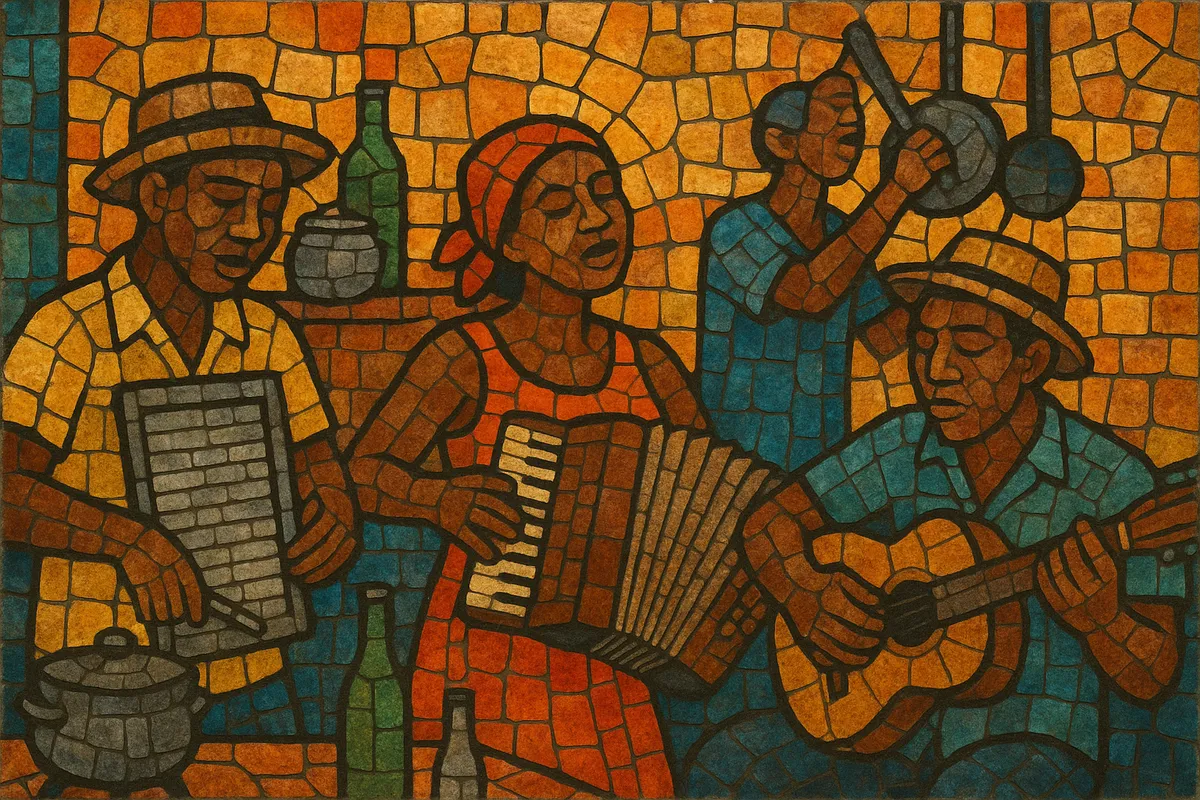
Kitchen dance music is a Caribbean vernacular dance style associated with scratch/kitchen bands that play at house parties, weddings, and community celebrations. The name comes from the use of readily available household objects—graters, washboards, bottles, and other "kitchen" items—alongside acoustic instruments to create lively, syncopated dance grooves.
Emerging in the Virgin Islands, the style blends African-derived rhythms and call-and-response singing with European social-dance forms such as polka, mazurka, waltz, and quadrille. Typical ensembles feature a guiro-like rasp (locally called a "squash"), triangle or steel pipe, hand drums, guitar/banjo/ukulele, accordion or fiddle, and sometimes flute or saxophone. Lyrics are often humorous, topical, and rich in double entendre, and the tempos favor participatory circle and couple dances.
Kitchen dance music grew out of late-19th- and early-20th-century community gatherings in the Virgin Islands, where musicians combined African-derived rhythms and improvisational practices with European social-dance repertoires (quadrilles, polkas, mazurkas, waltzes). Because dedicated instruments were not always accessible, players adapted household tools—graters, bottles, and washboards—into percussion, giving rise to the term "kitchen" bands.
Through the mid-1900s, kitchen dance music remained central to neighborhood festivities, Christmas serenades, and wedding after-parties. Portable, acoustic instrumentation made it ideal for parading from home to home, and the style absorbed elements from calypso/kaiso and mento while retaining its old-time dance set pieces. Field recordings and island radio helped document the tradition as tourism grew, introducing wider audiences to its distinctive sound.
By the late 20th and early 21st centuries, kitchen dance music was increasingly recognized as a heritage form in the Virgin Islands. Community ensembles, school programs, and cultural festivals kept the style active, and official recognition of related traditions (e.g., Virgin Islands scratch/quelbe) underscored its role as a living emblem of local identity. Today, kitchen dance music continues to animate fêtes, fairs, and cultural showcases, bridging old-time dances with contemporary island life.

